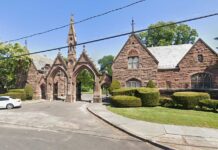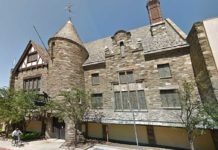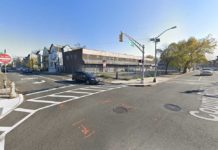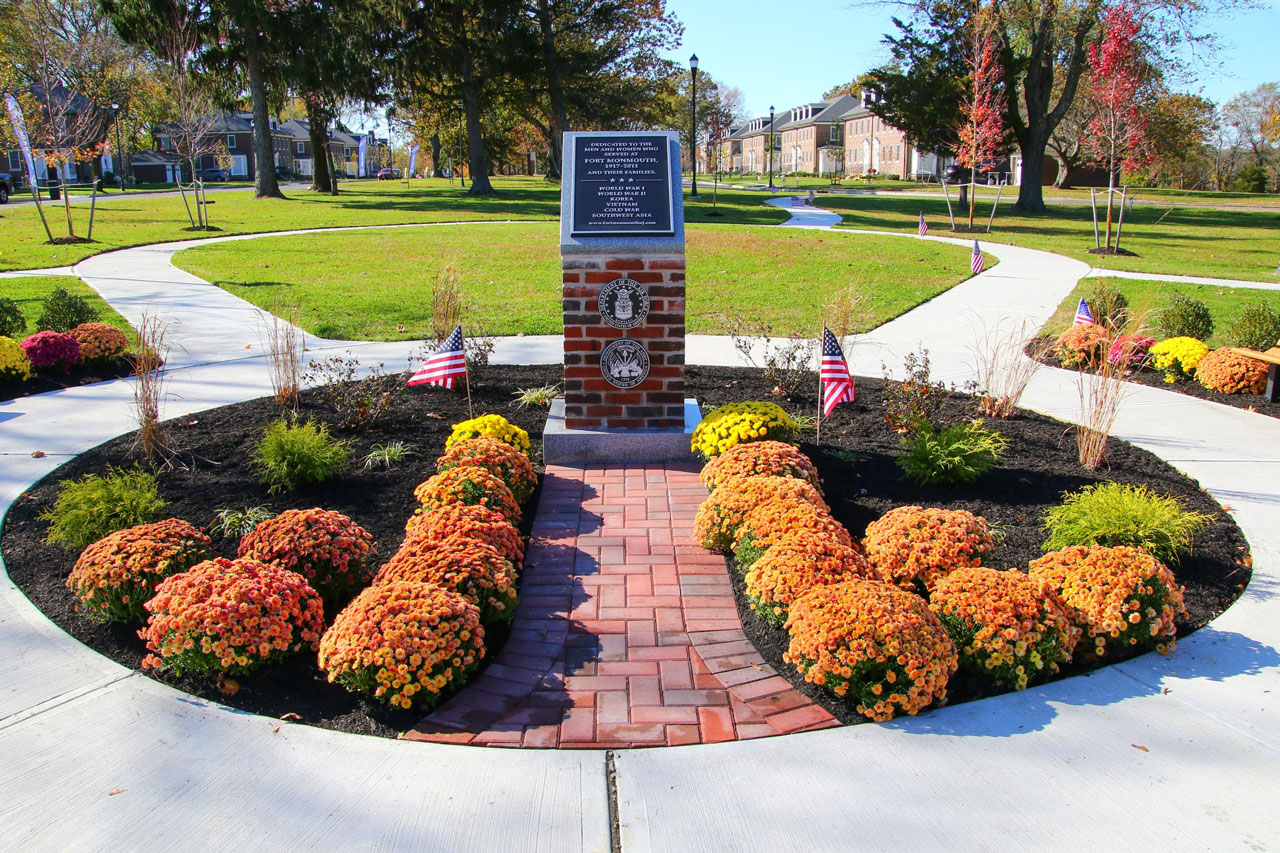
After the 94-year-old Fort Monmouth Army Base in Oceanport closed in 2011, developers transformed the officers’ quarters into 68 homes for sale and created a one-acre park. And just weeks ago, the builders and local officials paid homage to the base’s history by unveiling a new monument.
As part of the official opening of East Gate Park, local veterans and dignitaries joined the Fort Monmouth Economic Revitalization Authority (FMERA) for a ribbon-cutting ceremony to unveil the memorial, which will be a centerpiece of the park.
The memorial is made of solid granite and with a brick pillar base. It contains an applied cast metal plaque to honor the men and women who served at Fort Monmouth. The plaque contains seals representing the major military branches that performed at the post.
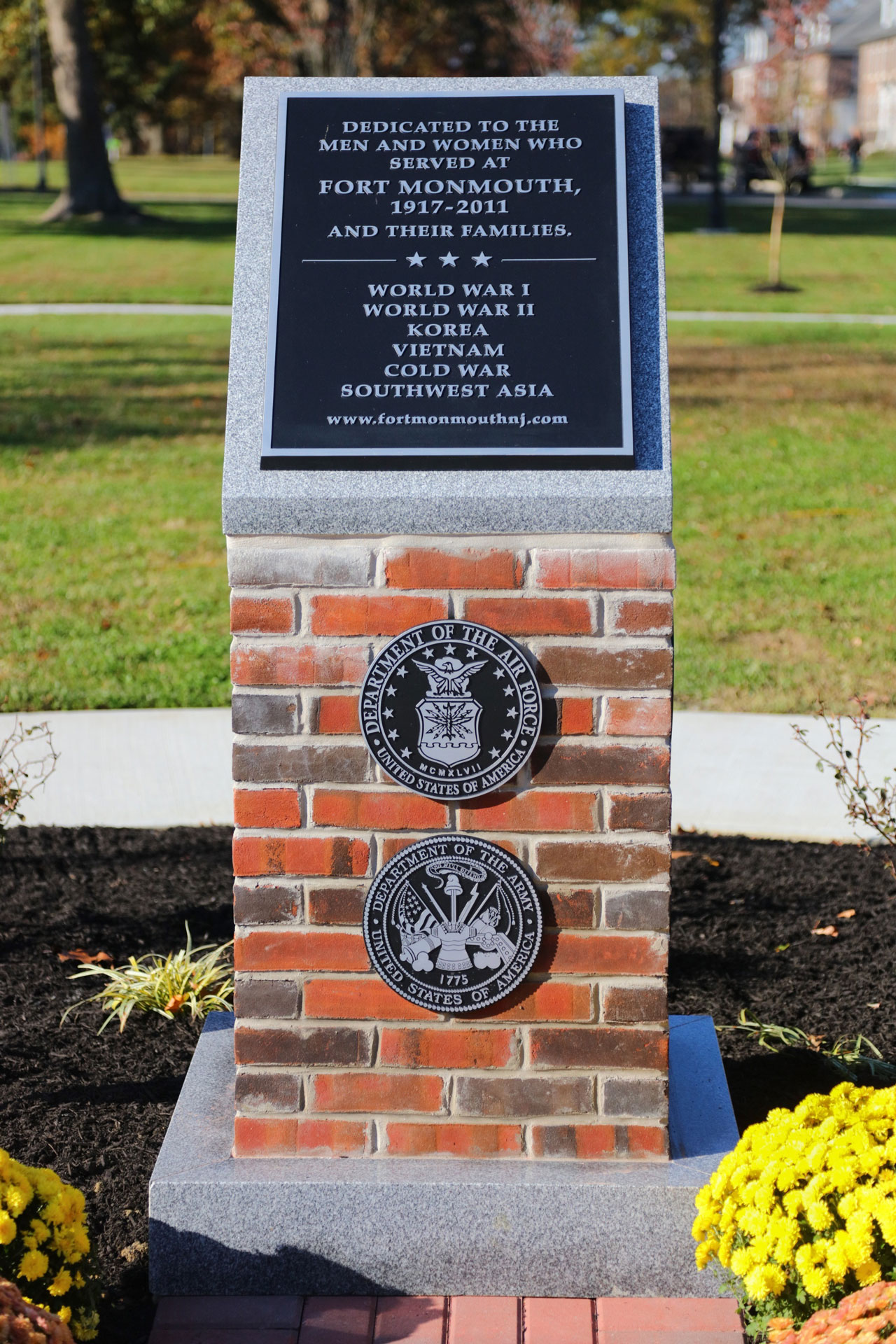
In 2011, most of the base’s 5,570 jobs were moved to Aberdeen, Maryland, after the federal government recommended that it be closed.
Over the years, the base served as a military training ground and a center for research teams who developed RADAR and other advances in communications and technology.
“Throughout the entire process, we engaged the veterans’ group to ensure the final memorial design aligned with their vision,” said Michael Hong, assistant vice president of development at RPM. “This will be a monument the entire community can be proud of and a humble remembrance of all who made Fort Monmouth a special piece of American history. We’re honored to officially unveil it today.”
RPM Development is the developer of East Gate, a group of 68 townhomes, duplexes, and single-family homes created in the former officers’ housing buildings.

In addition to the memorial, the park includes pedestrian pathways, benches, newly-seeded lawns, seasonal flowers, shrubbery, and a modernized lighting/lantern package.
The former base is located in Monmouth County, five miles from the Atlantic Ocean, two miles from New Jersey Transit’s Little Silver train station, and near major highways including Routes 35, 36, 18, and the Garden State Parkway.
In addition to RPM, other builders have proposed plans to redevelop portions of the base.
RPM Development commissioned Palermo Edwards Architecture and Design 446 to bring the monument to fruition, after getting feedback from alumni of the base and area veterans.
Related:
- Storied Fort Monmouth Army Base Undergoing Massive Transformation
- Former Officer Housing at Fort Monmouth Converted to Residential Homes
- A Memorial Day Look At New Jersey’s War Memorials And Battle Monuments
